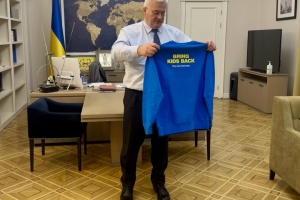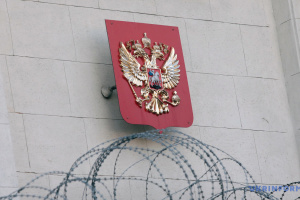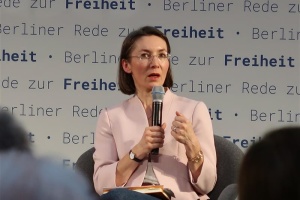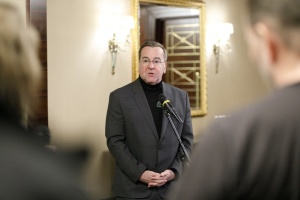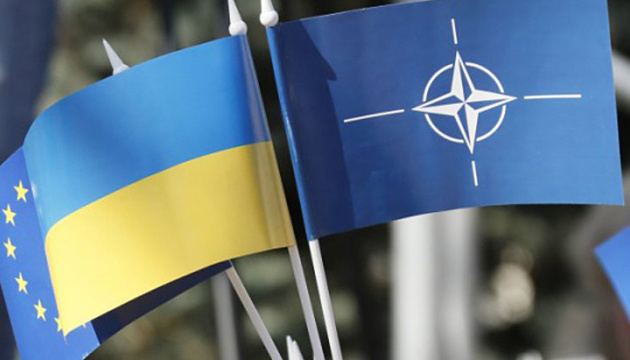
A Real Way to NATO Membership: Three Factors That Will Guarantee It
“Son, don’t believe this document, you will be deceived,” said President of France François Mitterrand to President Leonid Kuchma about the Budapest Memorandum after its signing on 5 December 1994.
With the start of the full-scale Russian invasion, the all-and-out genocide of the Ukrainian people and an unveiled strategy of scorched earth, many in Ukraine accurately concluded that Ukraine will be under threat of extreme danger from the east until Russia exists in its current form. In 2022–23, the death roller of this extra-aggressive country was ready to crush almost the entire population of Ukraine to start everything from the clean slate. The goal was to populate the country with a human element that would be completely under Moscow’s control with its shameful medieval habit of enslaving territories and killing its subjects, rather than just reigning there, while also threatening half of the world.
UKRAINE IS GRADUALLY BECOMING AN ASSET FOR THE ALLIANCE THANKS TO ITS SUCCESSFUL DEFENCE OF NATO’S EASTERN FLANK
Historically, Russia has been a territory where the life and liberties of individuals have not been given due consideration, and this abominable genetic code persists even in the 21st century. The Russians, instead of lusting for liberty and self-determination, have been vaccinated with constant informational doses of fanatical unavoidable chauvinism, which the authorities successfully employ as compensation in tandem with the encouragement of violence and theft.
The 2022–23 war demonstrates that nothing has changed in Russia since Muscovy times. Tsars in that area were called “great” because of their ferocity and persistent desire to torture and kill people. And, as generally known, every Tsar Ivan has his own Malyuta Skuratov. Moreover, there will always be enough oprichniks (tsar’s life-guardsman) in Russia, even though the necrophilic Tsar Peter liked to personally cut off the heads of those unbowed. These archetypal details about Russia’s history help explain why there are so many social monitors in the country.
On the contrary, this state of affairs elucidates the fervent aspirations of the most radical Ukrainians to achieve victory in the war against the Russian Federation, not solely through the complete cessation of occupation, but rather through a fundamental transformation of the political system or even better – nuclear disarmament. The swift transformation of the Russian Federation’s political structure can quickly convert into Ukraine’s full participation in NATO, and the gradual nuclear disarmament will make any further Russian attack impossible for at least the next decade. Even in mid-2023, it seems like a fantasy, but wasn’t the transfer of Patriot anti-missile systems to Ukraine an impossible dream? Ukraine is gradually proving to be an asset to the Alliance, as it has demonstrated remarkable success in defending NATO’s eastern flank. Unfortunately, it is paid for with the blood of Ukrainians.
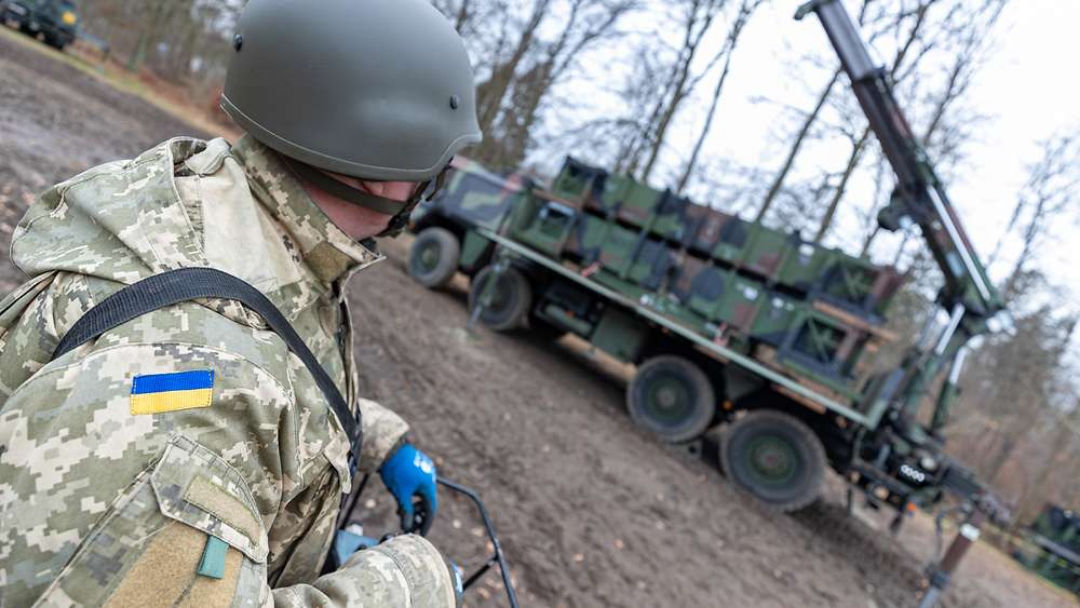
The Ukrainians have mastered the state-of-the-art Patriot missile defence system.
THE HISTORICAL EXPERIENCE PROVES THAT GUARANTEES CANNOT BE ABSTRACT
We must repeat what everyone has known for a long time, an unlearned historical lesson. Upon gaining independence in 1991, Ukraine had the third-largest nuclear arsenal in the world. However, pressured by global game players, it agreed to have a non-nuclear status in exchange for security guarantees. In December 1994, a significant document, as we had previously believed, was signed, namely the Memorandum on security assurances in connection with Ukraine’s accession to the Treaty on the Non-Proliferation of Nuclear Weapons. Nuclear Russia, Great Britain, and the United States undertook to assure the security of non-nuclear Ukraine. But it hasn’t even been twenty years since one of the guarantor countries turned into an aggressor and started to destroy Ukrainian statehood.
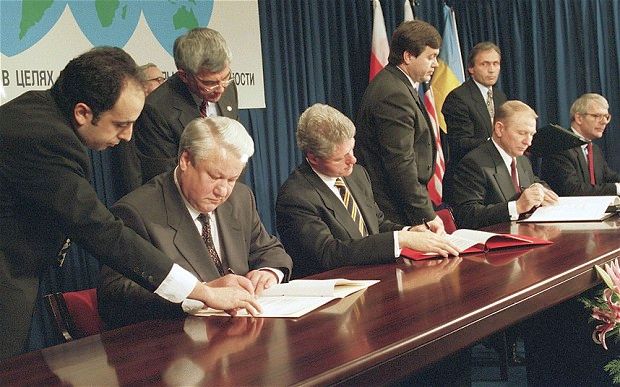
Budapest Memorandum of 1994
The fact that ex-US President Bill Clinton admitted in April 2023 to the Irish broadcaster RTE that he regretted his personal role in the nuclear disarmament of Ukraine in the 1990s is probably telling. He is convinced that Russia would be unable to unleash a war against nuclear Ukraine. It is no less telling that the then French President François Mitterrand did not believe that such an agreement would be effective. President Kuchma told about it in 2009 at the international conference in Jerusalem. He did not believe because only very practical, applied things could serve as guarantees, like help in creating real military capabilities against the backdrop of the guarantor countries’ awareness of the danger to themselves. Guarantees cannot be abstract, they must reflect actual opportunities for the state’s defence and general potential. Only a cursory examination of the activities of South Korea or Israel in this domain may provide comprehensive illustrative examples of the effectiveness of guarantees when they are properly constructed.
Ukraine has lost lots of time. Yet during bloody 2022–23, Ukrainians earned the right to freedom and independence – this is acknowledged by the entire world, even by geographically remote Japan and Australia. Hence, the official Kyiv strongly asserts that the right to freedom and independence must be safeguarded by tangible assurances. Only Ukraine’s full-fledged NATO membership may serve as such. Nonetheless, it is evident that the Alliance harbours apprehensions regarding a military confrontation with Russia and is seeking an interim option. Ukraine’s partner countries intend to announce their decision during the next historical milestone – the summit of the North Atlantic Alliance in Vilnius. For some time now, the terms and content of new guarantees have been actively and confidentially discussed, and a joint decision is expected to be made in June. Multiple factors clearly impact the form and content of new guarantees: primarily, the results of the offensive of the Ukrainian Defence Forces on the Russian occupiers; the situation within the RF; the factor of China, and Iran’s and North Korea’s share of participation in helping the Kremlin; and finally, the upcoming Presidential elections in the US.
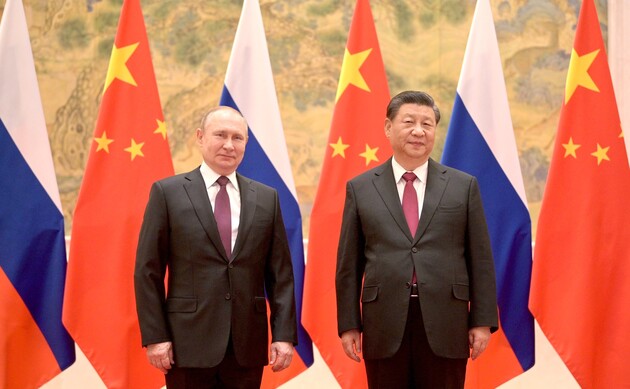
Chinese factor significantly influences the position of the West
“BY IRON AND BLOOD.” TECHNOLOGICAL ADVANTAGES ALLOW DOMINATING IN THE MODERN WAR
The world has exhibited a significant degree of interdependence and sensitivity on a global scale. Yet hardly anything has changed in the world since Bismarck, and just as before, “Not through speeches and majority decisions will the great questions of the day be decided, but by iron and blood.” In the meantime, new trends did appear. Although success on the battlefield is determined by state-of-the-art technologies, such as perfect intelligence tools and high-precision weapons and any accessories used to make them work, nuclear arsenals are still growing in the world. The Stockholm International Peace Research Institute (SIPRI) has found that Russia, China, North Korea, and India, just like the UK, Israel, the US, and France, are all working on upgrading and expanding their nuclear developments since the Russian continental war started.
International tensions are continuously growing, and China may develop a nuclear arsenal comparable to the American and Russian ones by the end of the decade. In fact, the significance of the devastating Russian-Ukrainian war goes beyond the current security of the region. Its outcomes will have a significant impact on the fate of the entire planet, as the issue at hand is whether the world can establish a fresh framework for international security already during this war.
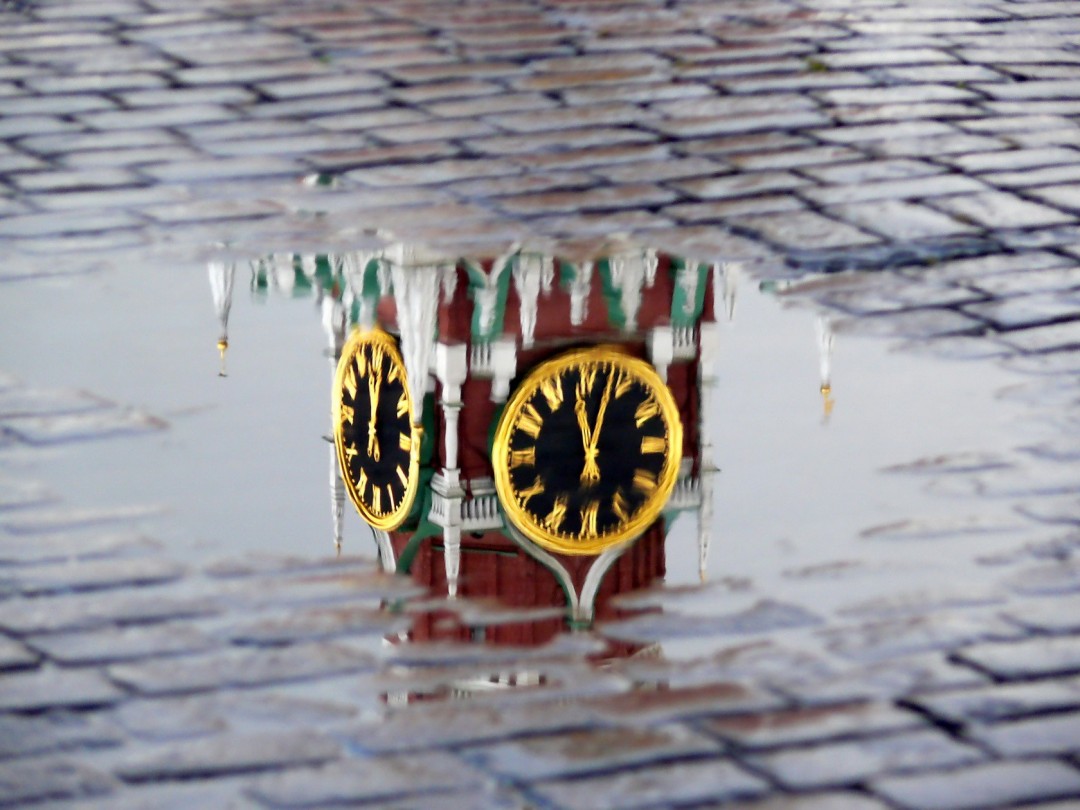
In 2022, Putin’s Moscow ruined not only the existing global security system but also recklessly violated the nuclear balance of powers. The announcement of the transfer of tactical nuclear weapons to Belarus and the secret assistance provided to Iran in the advancement of its nuclear programme are not the only aspects of this situation. The Kremlin's recklessness and terrorism, coupled with its irrational nuclear blackmail, have already resulted in a situation where the global consensus on the future of the entire planet is at stake: either numerous nations will possess nuclear weapons, or nuclear weapons will turn into a military rudiment, and the age of nuclear deterrence will recede into the historical distance. In this context, it would be expedient to listen to the recommendation of Timothy Snider, Professor at Yale University, who believes that to prevent Russia’s nuclear blackmail, Ukraine must win this war using conventional weapons. Therefore, support for Ukraine reduces the likelihood of nuclear war in the future. This is a good idea when the world is united and puts pressure on the country that placed all its bets on terror. And today, the number of its (Ukraine’s – ed.) supporters in the Western camp is growing. We would like to add that the preliminary calculations are confirmed. Modern war is won by using new technologies: cutting-edge technology that ensures continuous and accurate intelligence, high-precision control and strikes, and the combination of inconspicuousness and power and massive use of new and relatively cheap weapons systems are significantly superior to conventional military capabilities of the fourth generation. New technologies have greatly improved the ability of small units to act independently and simultaneously powerfully, but the Russian-Ukrainian war is an armed battle of an intermediate period, a clash of mixed weapons from both old and new generations.
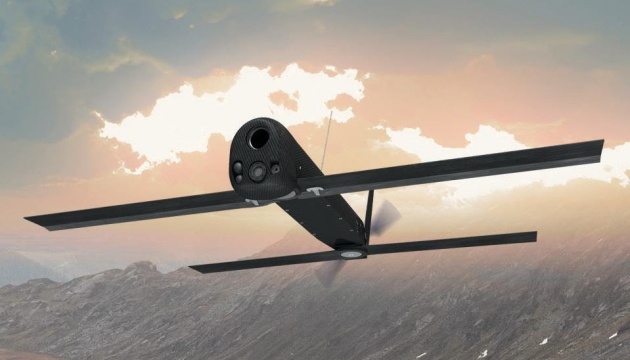
Switchblade
WESTERN PARTNERS STILL DON’T SEE THE POSSIBILITY OF LIBERATING CRIMEA FROM RUSSIAN OCCUPIERS
There is no magic wand in a modern war. Even with the Defence Forces’ tactical triumphs on the battlefield in early June 2023, there is still no indication that the entire NATO is aiming for the exact kind of victory that the Ukrainian people are looking for. And in this instance, we are not even discussing the dissolution of Putin’s regime or the nuclear disarmament of a nation that has violated international norms. It is about the Defence Forces returning to the borders of 1991. The Biden Administration still fears this, and it seems like President Macron doesn’t really want it either. Chancellor Scholz is trying to align Berlin’s position with that of Washington.
London understands the need for a Ukrainian victory better than anyone else, but it is difficult to act without a consensus within the Alliance. Hence, Ukraine still does not have operational and tactical ATACMS missiles for HIMARS, though the AFU artillerymen don’t even need to learn them, but just take and use. Until now, the West has refrained from attacking Russia and pressing it mercilessly. Because of this, a decision to transfer German analogues of Storm Shadow transferred by Britain is not being made. German Taurus cruise missiles with a range of up to 400–500 kilometres would be of great help in liberating Crimea. Ten years ago, about 600 of them were purchased for the Bundeswehr, however, currently, only about 600 are in service. The West, which has already greatly enhanced its philosophy of military and technical assistance to Ukraine in favour of the Armed Forces, requires the same missile alliance as it has in the situation with tanks.
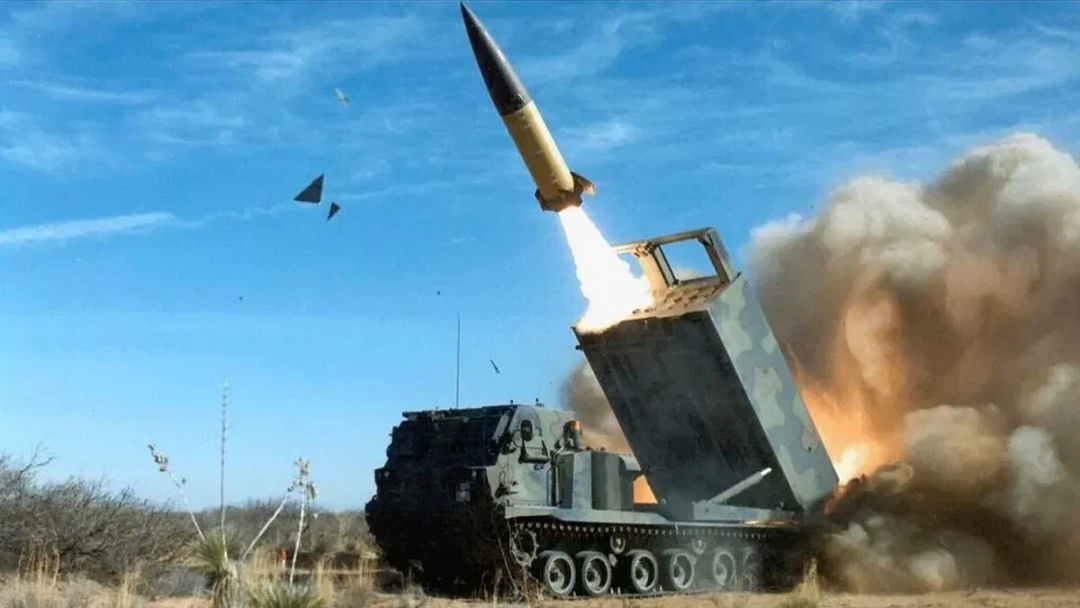
ATACMS missile
Experts have a valid argument that the ground launch system of ATACMS missiles confers a significant advantage over cruise missiles, and it is also less susceptible to Russian air defence. But in fact, Ukraine needs more missiles – various high-precision means of destruction. And 200–300 operational-tactical ground-to-ground and air-to-ground missiles with a range of 300–400 km that were not provided in June 2023 would undoubtedly expedite the resolution. At the same time, we will assume that the matter of the transfer of F-16 to Ukraine is nearly resolved, but it will not happen until at least the end of 2023. “The more land the Ukrainians are able to liberate, the stronger their hand will be at the negotiating table, and the more likely it is that Russian President Vladimir Putin will understand that he will never win on the battlefield,” NATO Secretary General Jens Stoltenberg noted on 13 June during his meeting with US President Biden. The politician’s doubts about Ukraine’s ability to de-occupy all territories, including Crimea, and win are reflected in these words. Negotiations following the Defence Forces’ return to the borders as of 24 February 2022, and subsequent negotiations with Putin’s terrorist regime, appear to be a more appealing scenario for the collective NATO than a risky attack on Crimea. Because this is where an egg is with the Kremlin Koshchei’s (the Immortal) death on the tip of the needle.
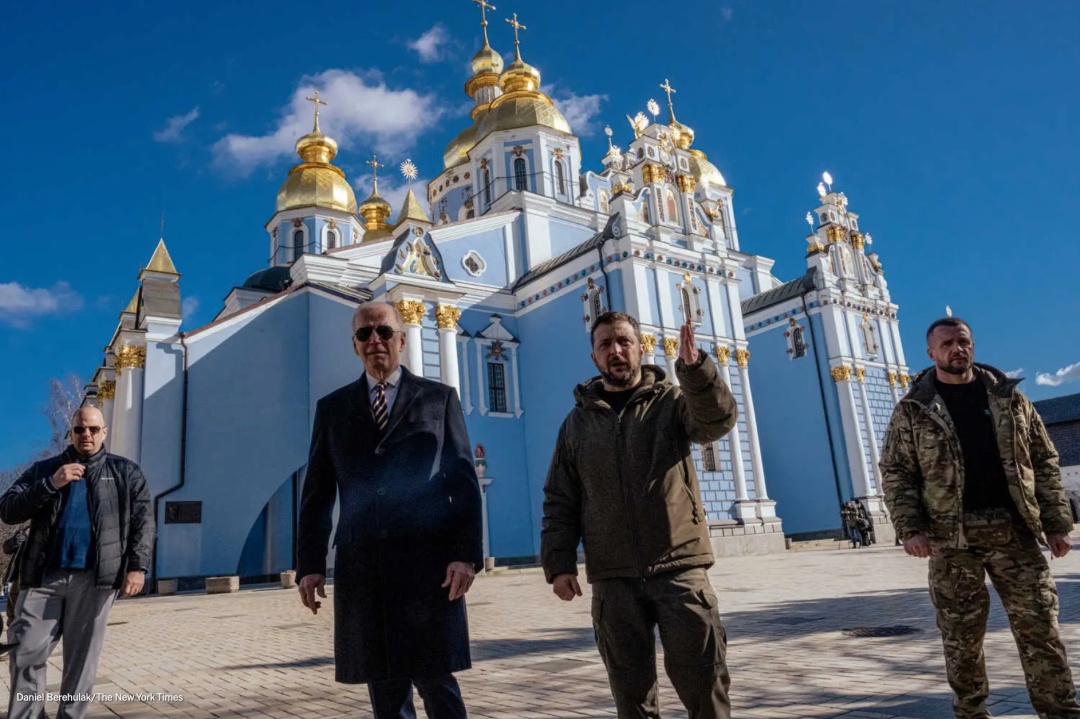
NATO leaders still stick to the idea of a phased war and war management, as shown by the dosed military assistance to Ukraine. At this stage (June 2023), the prospect of liberating Crimea from the Russian invaders is still not considered by Western partners. This is confirmed by well-informed media, like The Economist. Three scenarios were considered for the Ukrainian offensive in the first ten days of June, but none of them envisaged the de-occupation of Crimea. “New Ukrainian brigades armed with Western weapons could achieve a positive outcome by breaking the land bridge between Russia and the Crimean Peninsula and approaching a point where they could threaten the Russian positions in Crimea,” the media asserted on 6 June. This means that Western allies have set themselves the task of doing this. If this goal is achieved, there will be a meaningful discussion about missiles and aircraft. Why? The answer is simple: to pressure Putin’s regime carefully and consistently. It appears to be too risky for the West to attack Crimea with many missiles, given the constant escalation by the principal criminal and the first carpetbagger of the new century, Putin. His decision to blow up the Kakhovka dam was clearly seen as the beginning of resorting to the last arguments, and it’s possible that a cornered crazy rat will try something that may have serious consequences for humanity. Putin has long been ready for large-scale catastrophes with mass casualties, and man-made disasters are a priority for him.
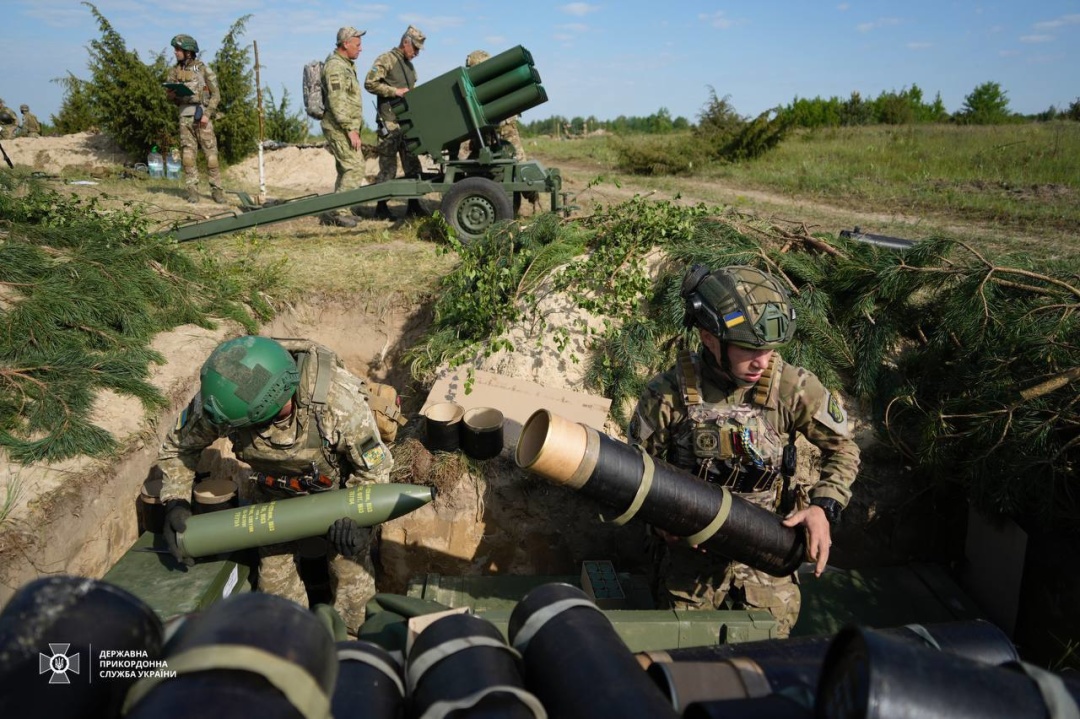
Ukraine has started the offensive
The Permissive disclosures of the “criminal on the throne” on TV, like saying that “there are no chances of having good relationships with his neighbours – the brotherly Ukrainian people”, shows his hopeless detachment from reality. Indeed, this position of the West is not entirely fair or justified. After all, already during the offensive that has just started, the Ukrainian Defence Forces also applied NATO’s military principle of FOFA – simultaneous combat with the second echelon during the assault. They managed to destroy the enemy column completely near Enerhodar in the first days of June and film the episode. One can only imagine how excited the troops would be if there were powerful strikes on military facilities on the peninsula during the offensive in June. But we are where we are. This includes the belief that this position of the West will not deter Ukraine from pursuing its goal of gaining control of its lands for long, which is only following the demonstration of successful counteroffensive. All this is happening against the backdrop of the profound awareness of the significance of the devastating strike on Russian troops and logistical hubs on the peninsula. “Serious pressure on Crimea is the fastest way to end the war on terms acceptable to Ukraine. Kyiv does not want a truce, which Moscow will use to rearm and resume the war at a more favourable time.” This was written by John Herbst, Senior Director at the Atlantic Council’s Eurasia Centre, and Daniel Fried, former State Department’s Coordinator for Sanctions Policy in their joint article for the Washington Post, and this is a clear confirmation that a deliberate deterrence of Ukraine’s Defence Forces is taking place. However, on a positive note, not everyone in the overseas government is satisfied with this situation. On 9 June, a bipartisan resolution appeared in the US Congress regarding the immediate transfer of ATACMS missiles to Ukraine.
DEFENCE OF UKRAINE AS PART OF NATO IS LESS EXPENSIVE THAN WEAPON SUPPLIES
The history of this war shows, without a doubt, that persistent pressure on Western allies, coupled with the unfailing resolve of Ukrainian defenders, can swiftly prompt the West to change its views. So, let’s go back to the NATO summit on 11–12 July 2023. It is clear that Ukraine will desperately need to get a clear signal about when it is going to become a de jure NATO member. It is already known that the new “security agreement” has the potential to serve as a legal framework document, as per the Israeli model. It is possible that it will include the obligation for NATO countries to provide Ukraine with weapons and technologies to ensure its ability to fight Russia in a long-term. Analysts who study global security think that Ukraine should get guarantees before joining NATO, not instead it. An annual subsidy for good defence against the enemy in the east is possible under this framework agreement with Ukraine. How powerful will the agreement be, and how much will it act as a safeguard? It is obvious that while the “trading continues”, not everyone believes in it.
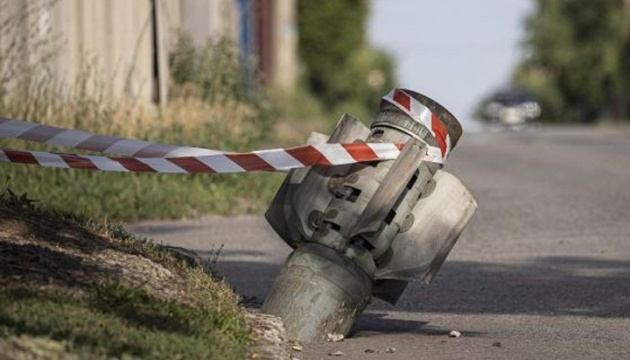
For example, former NATO Secretary General Rasmussen took a very active position, proposing that Western countries first provide “substantial” guarantees to Ukraine, ideally on the eve of the summit. And the summit contained a signal that Ukraine would receive an invitation to the Alliance the following year. One of Rasmussen’s interesting arguments is that defending Ukraine within NATO would be less costly than supplying weapons to combat Russia incessantly. He notes that guarantees must act as a bridge to the membership, rather than its alternative. Moreover, Rasmussen observed that if there were no sufficient guarantees from NATO, some of its members might contemplate the possibility of deploying their contingents on the territory of Ukraine. Clearly, it is so unlikely that “some NATO countries” would send troops to Ukraine that it might require ritual dances to make such a significant investment into Ukraine. Rasmussen remains sceptical about the likelihood of this happening.
And technology transfer is another powerful argument. First, the technological gap between Ukraine and enemy Russia is an element of guarantees resulting from the development of technological advantages. Second, the arrival of world-class Western defence giants in Ukraine (the German Rheinmetall and the British BAE Systems have already announced their intention) is not only the organization of projects to repair the military equipment available in the AFU and their development (Western – ed.) but also joint manufacture of modern armaments. Third, Ukraine has made big advances of its own. Getting some technology from the West might help with overcomplicated technological and political tasks. In this particular context, it is no coincidence that in early June, Defence Minister Reznikov announced the creation of a Ukraine-manufactured missile with a range of over 1,000 kilometres, intending for this to be heard in the Western world. It would be better for everyone if, during the post-war confrontation, Ukraine produced (alone or in cooperation) a couple of thousand cruise and ballistic missiles with a range of 500 to 1,000 km. And this is in addition to a certain amount of missiles provided by NATO countries.

JDAM-ER missile
NATO SUMMIT IN JULY MAY DO A LOT FOR UKRAINE’S VICTORY
Aid will always fall short of expectations for technical, technological, administrative, and political reasons. Overall, they are objective. This is clearly seen from the following example: President Zelenskyi said that 50 Patriot batteries are needed to “close” the sky of Ukraine from enemy missiles. Within a few days, a response came from the CEO of Raytheon Technologies, Greg Geiss: Ukraine will receive 5 more Patriot batteries by the end of 2024. Furthermore, the CEO of the anti-missile defence manufacturer also revealed that the company intended to ramp up production to twelve systems a year. It is about the balance between realities and desires. This should encourage the development of own capabilities all the more.
Therefore, the NATO summit in July will have a significant impact on Ukraine’s victory. The enhanced technological level of weapons for the Defence Forces is an important form of guaranteeing Ukraine’s security. These are the systems that Ukraine has already started receiving in 2023. Simultaneously, a crucial aspect of guaranteeing Ukraine’s long-term security is the incorporation of its scientific, defence and industrial developments in the process of enhancing the state’s defence capabilities. This is not only about the support of the Ukrainian defence industry: targeted investments in the defence industry and technology development initiatives from the United States and Europe should encompass the preparation for a long war and the development of the Ukrainian army capabilities for a prolonged period. Clearly, the development of the “Technologies for the Revival of Ukraine” project will become an important task, which will encompass not only investments in purely military technologies but also the creation of joint strategic industries or their sub-sectors (the production of titanium, lithium, zirconium, and others), as well as dual-use projects, for example, in the rocket and space sector. Introducing such approaches will serve as motivation for US and European businesses, will allow for the joint elaboration of technologies, and will become an accelerator for the development of the defence sector, where most technologies are dual-purpose.
Therefore, novel and powerful weapons for the Ukrainian Defence Forces, cutting-edge technologies and achievements that consolidate Ukraine’s technological advantages, and the truly effective technological restrictions on the Russian Federation are the essential components of realistic guarantees for the present. This will help Ukraine win and get more guarantees, like being a full member of NATO. Sustainable peace can only be achieved in a combined way – the technological development of Ukraine and the technological containment of the Russian Federation.
Volodymyr Horbulin, First Vice President of the National Academy of Sciences of Ukraine
Valentyn Badrak, Director of the Centre for Army Conversion and Disarmament Studies (CACDS)

